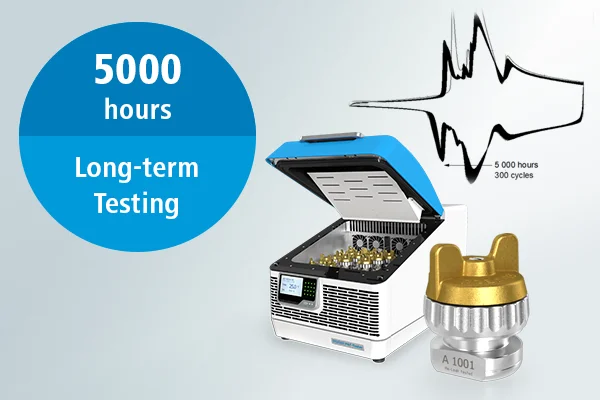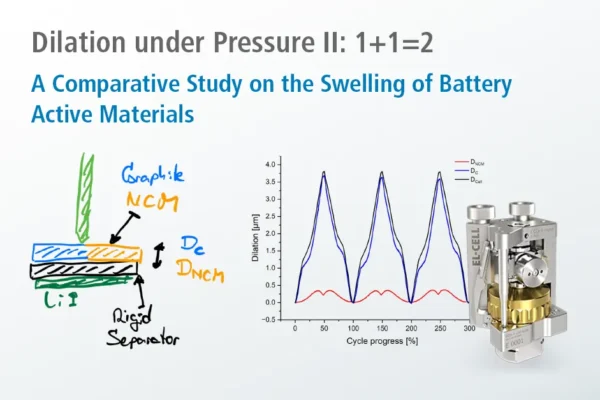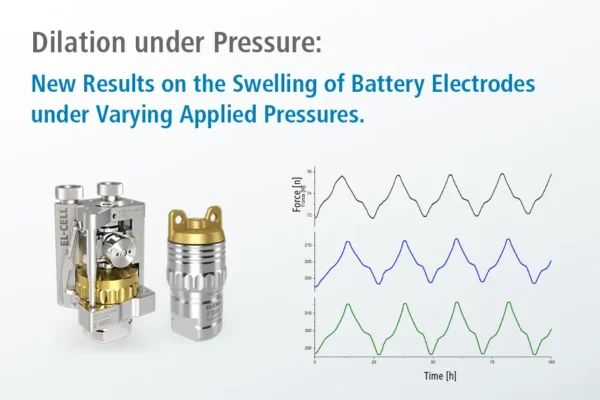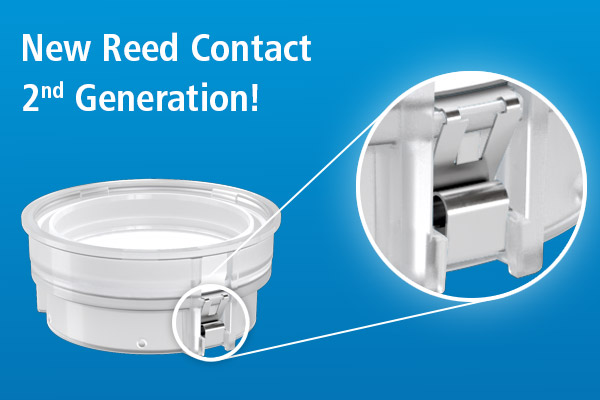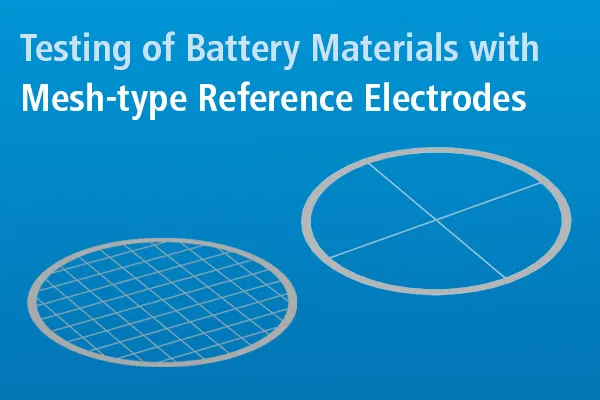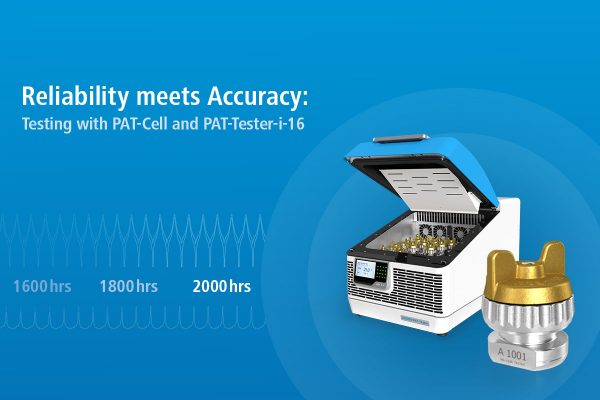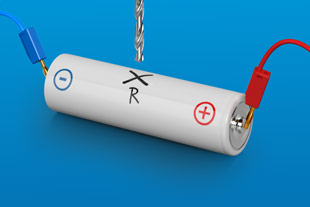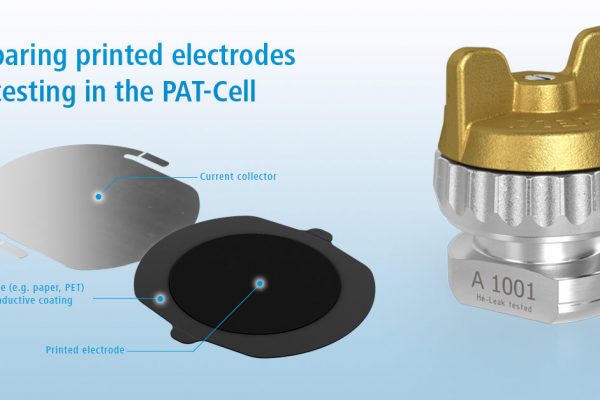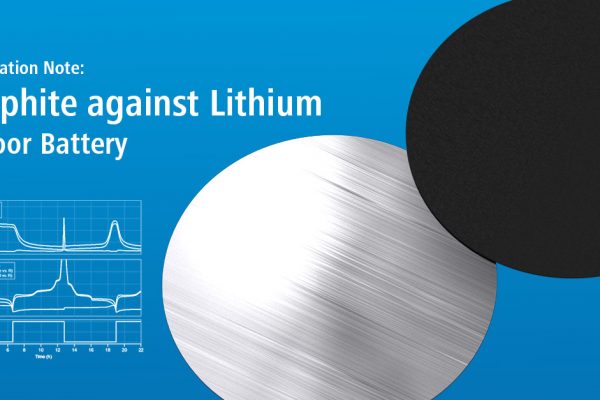New 5000-hour Sample Test Results Some time ago, we demonstrated the outstanding reliability and accuracy of the PAT-Cell, our standard 3-electrode battery test cell, in combination with our PAT-tester-i-16 potentiostat,... read more →
In this work, we present a comparative study on the dilation of standard battery active materials: NCM (111) and graphite. We obtained the half-cell dilations of both electrodes by using the... read more →
In this work, we present a novel approach to investigating the dilation of battery electrode materials under varying pressures applied onto the cell stack. For that, the PAT-Cell Force was... read more →
Further Improve Your Measurements with the New Reed Contact Generation! It may seem inconspicuous, but the reed contact is a central element in every PAT-Core, as it transmits the signal... read more →
Testing of Battery Materials with Mesh-type Reference Electrodes A long time ago, we advertised to use a finger-type (aka wire-type) reference electrode. Everything we wrote still holds. However, the bad... read more →
Comparing Seal Materials: When should I use aluminum or PE seals? The battery test cells in the PAT series are characterized by their high impermeability to the outside atmosphere.... read more →
Reliability meets Accuracy: Testing with PAT-Cell and PAT-Tester-i-16. We want to show the results of our last long-term measurement (2000 hours) with the PAT-Cell. The PAT-Cell is our reliable... read more →
Testing materials for lithium-ion batteries A battery is a can with two terminals named plus and minus, or 1 and 2. Testing this battery means that you apply either... read more →
What is a printed electrode? A printed electrode can be fabricated using techniques such as screen printing or inkjet printing which offer the advantage to produce structured electrodes. The electrode... read more →
In our last application note we took a closer look at the cathode "half-cell" of the lithium-ion battery, which in our case was NCM against lithium metal. It turned out,... read more →



